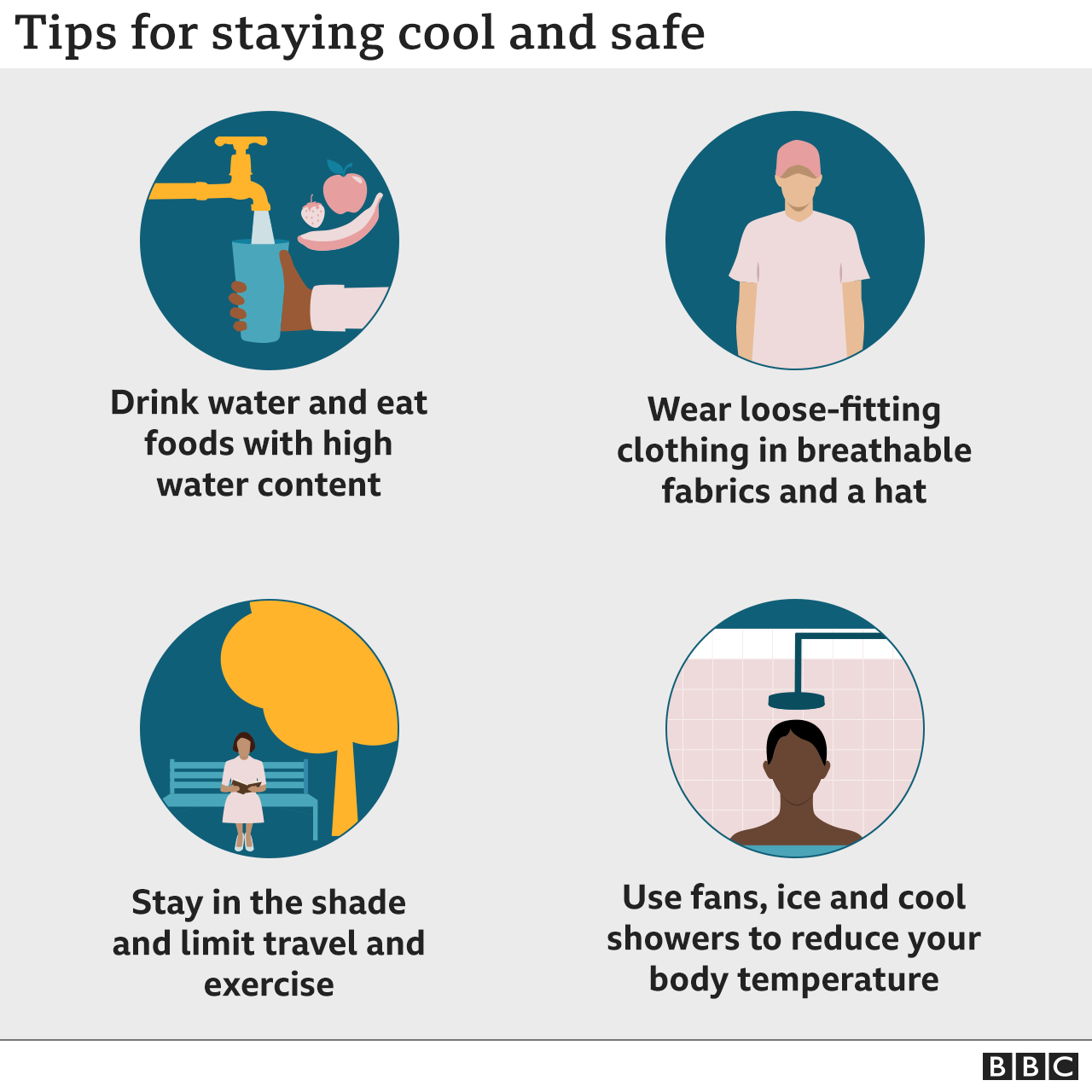Heatwave: When is it too hot to work?
- Published
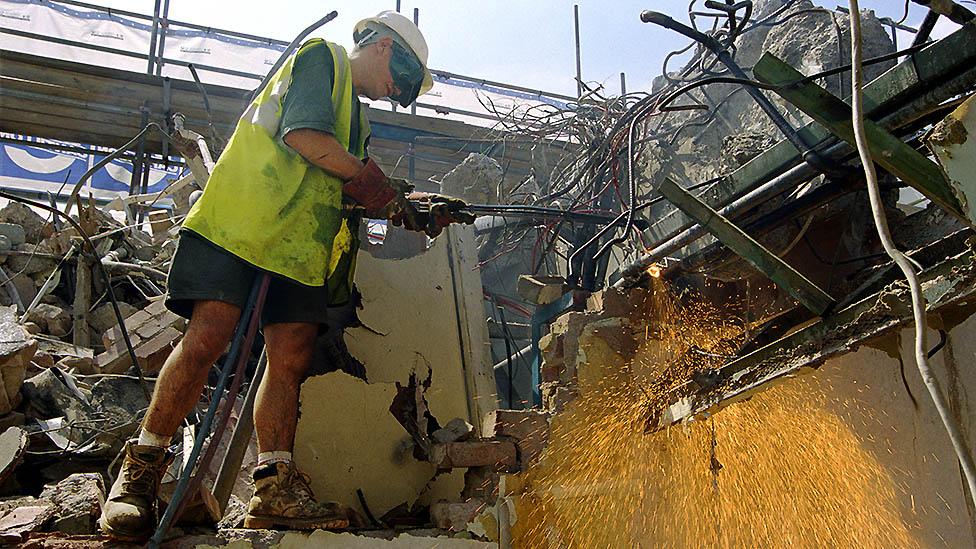
Construction workers will endure soaring temperatures over the next few days
An amber extreme heat health warning has been issued for large parts of England from Thursday, with temperatures set to soar to 35C (95F) in some areas.
This is the second such alert in recent weeks.
The Met Office said while conditions would be below record highs, this heatwave could last longer.
A heatwave is defined as: above average temperatures sustained for three days or more.
So what does that mean for people going to work in the heat?
Is there a maximum temperature for workplaces?
No law in the UK says a given temperature is too hot or too cold to work.
But guidance from, external the Health and Safety Executive (HSE) says a workplace's temperature must be "reasonable" with "clean and fresh air".
In cold weather, it says you shouldn't be asked to work in less than 16C - or 13C if the job is mostly physical. But it doesn't mention a top temperature.
A number of MPs recently backed a campaign for a legal upper limit of 30C in most workplaces, external - or 27C for those doing strenuous work - but there's no sign of legislation on that for now.
What are my rights?
Whether your employer accepts that it's too hot to go to work is "a matter for them", according to Mark Scoggins, solicitor advocate at Fisher Scoggins Waters.
"The HSE won't issue any guidance on that and they shouldn't," he adds.
But the Health and Safety at Work Act, external means bosses are generally responsible for employees' welfare.
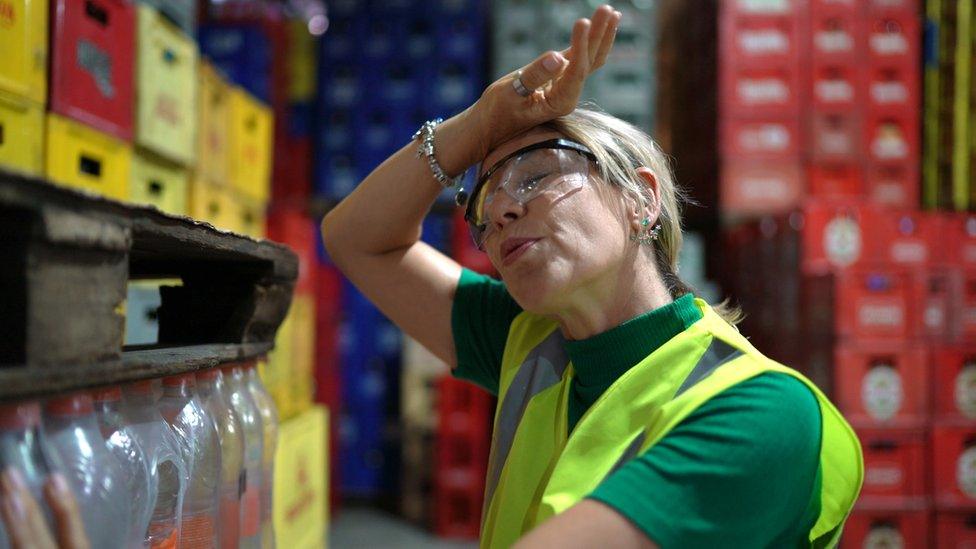
The Unite union says employers have "a legal and moral duty to ensure workers' health is not damaged during the current hot weather".
And following the heatwave in July, the HSE has said employers should be responding to the changing environment by planning adaptations such as ventilation and air conditioning.
The HSE encourages staff to talk to their bosses if the workplace isn't comfortable.
What can employers do to cool things down?
The HSE says employers should let staff work flexibly where possible - shifting their hours to minimise working at the hottest times of day.
Relaxing formal dress codes and moving workstations away from hot places or out of direct sunlight can also help.
Where possible, windows should be opened, radiators should be switched off, and fans or air-conditioning units should be available.
The TUC, the umbrella body for the UK's trades unions, says businesses should let office staff work from home or adjust their hours to avoid rush-hour travel.
If you are working from home, close curtains to block out the sun, and in the morning and evening open windows on opposite sides of your home, to let hot air out and cold air in. Use a fan to encourage airflow.
What about people who work outside?
The Unite union says manual workers are particularly vulnerable.
"Employers should consider rescheduling work to cooler times of the day, and provide cooling areas such as shade or air-conditioned rest rooms.
"If workers show any signs of heat exhaustion, the employer should immediately ensure they stop work and are allowed to recover, without loss of pay."
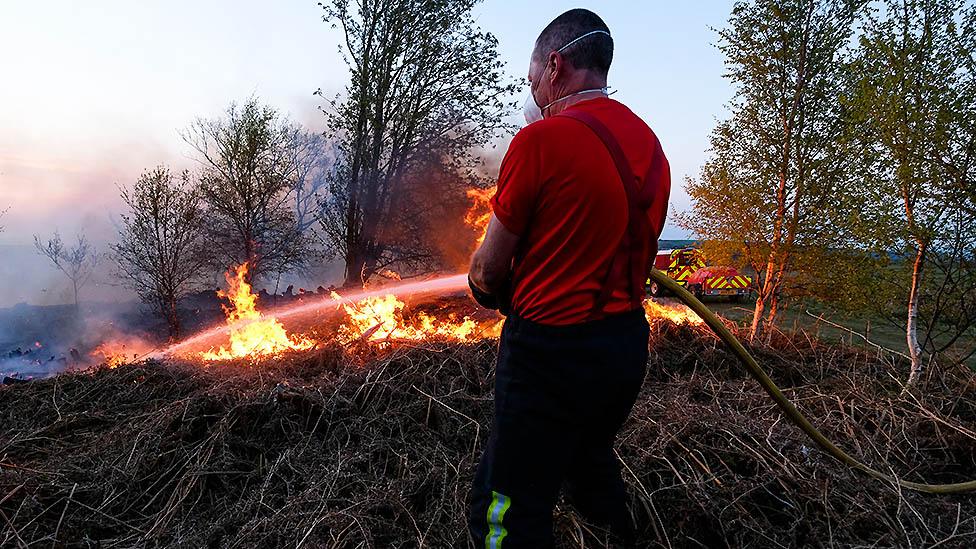
Wildfires broke out in several locations in July stretching fire service resources
But Justin Sullivan, chair of the Construction Industry Council chair, says building sites' operating hours are often limited by planning laws designed to minimise their impact on surrounding communities. So starting early or finishing late isn't always an option.
However, he agrees that all workers should have access to water, protective clothing and shade.
Some materials, like paint and concrete, can't be used on extremely hot days as the heat causes the materials to fail. He says all site managers have temperature gauges, and switch workers to different jobs where possible.
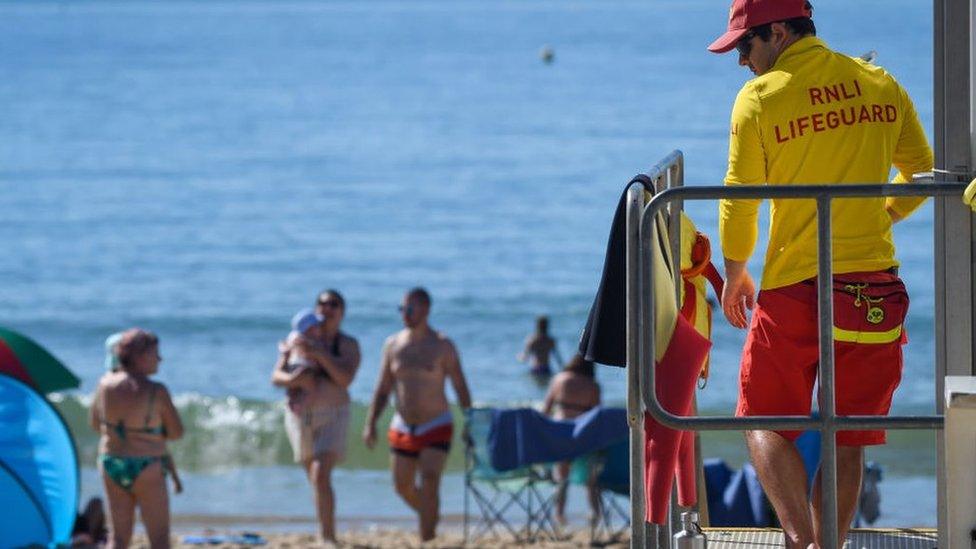
Lifeguards are especially important in hot weather, when more people are tempted to swim, but they also need to look after themselves.
All lifeguards should have cold water, a wide-brimmed hat, a long-sleeved top, polarised sunglasses, a high factor sunscreen and access to shade, according to Jo Talbot from the Royal Life Saving Society UK.
They should also have regular breaks.
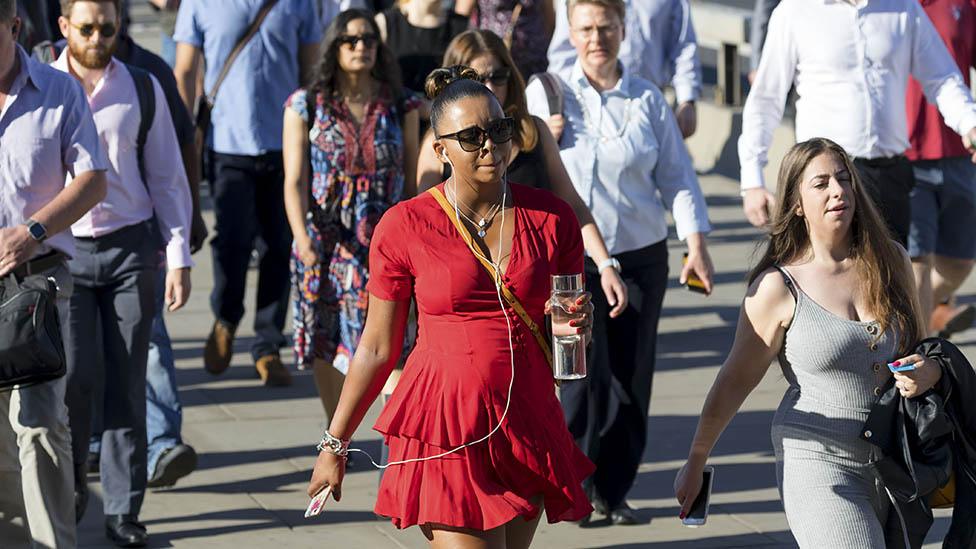
Should I travel to work?
There is no official advice in place instructing you not to travel.
Some disruption to transport services is likely, although not on the scale of the last heatwave.
Network Rail says it is not planning blanket speed restrictions because temperatures are not predicted to hit their trigger point, although temperatures could be high enough to prompt "spot" speed restrictions. Railway tracks get a lot hotter than the air temperature; during the last period of hot weather hundreds of trains were cancelled and delayed. At airports in July the scorching heat also impacted runways causing disruption.
National Highways is advising drivers to plan their journeys over the next few days in advance and carry out basic checks to ensure vehicles are roadworthy before setting off, including keeping coolant and engine oil topped up.
How can I keep cool at work?
There are some simple things individuals can do to make the heat more bearable.
Dr Anna Mavrogianni, who researches sustainable building and urban design at University College London, says as well as avoiding direct sunlight and opening windows, it can help to switch off electrical equipment that's not in use, like photocopiers.
Light-coloured clothing is cooler than dark, as it absorbs less heat. Choose looser-fitting garments made from natural materials like cotton and linen, which are more breathable.
To stay hydrated, drink water before you feel thirsty, and avoid heavy meals which require more digestion, in turn producing more body heat.
